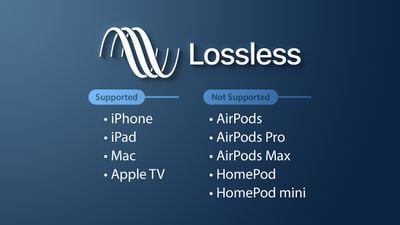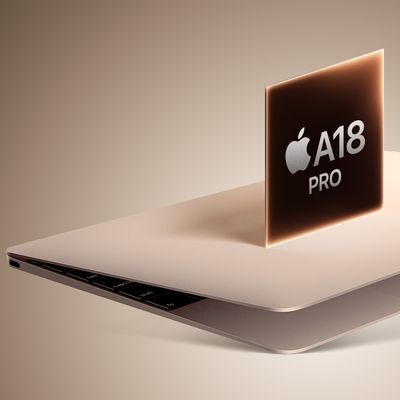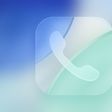Apple in June 2021 added new Lossless and Hi-Res Lossless tiers to Apple Music, but so far, it's a bit confusing trying to determine which devices support Apple Music's Lossless Audio and which devices do not.
This guide covers everything that we know so far about Lossless Audio, and we'll be updating it as we learn more.
What is Lossless Audio?
Apple upgraded its entire streaming music catalog to lossless audio using the ALAC (Apple Lossless Audio Codec) format. ALAC is a lossless compression format that lets Apple make smaller file sizes without impacting the integrity of the original audio recording.
Lossless means that after compression and then decompression, the audio that you're hearing is identical to the audio as it was recorded by the artist, preserving the texture, detail, and sound that went into the music when it was created.
With lossless audio, Apple Music subscribers can listen to songs exactly as the artists recorded them in the studio and intended them to be heard.
Lossless Device Support

Supported
According to Apple, lossless audio on Apple Music can be listened to on iPhone, iPad, Mac, and Apple TV. Support for lossless audio will be added to the HomePod and HomePod mini via a future software update.
The HomePod and HomePod mini are expected to gain lossless audio support with the launch of iOS 15. The HomePod 15 software that was released in July adds Lossless Audio support for the HomePod and HomePod mini, and it will see a public release this fall.
Unsupported
None of Apple's headphones, however, work with lossless audio. The AirPods, AirPods Pro, and AirPods Max are limited to the Bluetooth AAC codec and simply cannot support the ALAC format.
In regard to a wired connection for AirPods Max, Apple says that AirPods Max can be connected to devices playing Lossless and Hi-Res Lossless recordings with exceptional audio quality, but because of the analog to digital conversion in the Lightning to 3.5mm audio cable, playback will not be completely lossless.
Lossless Audio Quality
The standard Lossless tier starts at CD quality, which is 16-bit at 44.1 kHz, and it goes up to 24-bit at 48 kHz. Apple is also adding a Hi-Res Lossless tier for audiophiles, which is available at 24-bit 192 kHz, but Hi-Res Lossless will require a USB digital-to-analog converter, or DAC.
Even when connected by a physical wire, the AirPods Max won't support true lossless audio.
It is not clear if ALAC support is something that Apple can add in the future because technically, Bluetooth 5.0 should support higher bitrates, nor is it known if Apple plans to add support to future audio devices.
Lossless Audio Songs
At launch, 20 million songs supported lossless quality, with Apple planning to bring support to all 75 million+ songs on Apple Music by the end of 2021.
The feature is limited to Apple Music streaming subscribers. Lossless quality will not be available for iTunes purchases and there is no way to upgrade owned music to lossless via iTunes Match.
Can You Even Hear Lossless Audio?
Lossless audio is not a new concept, and has in fact been supported via iTunes and the Apple Music app for Mac for years now. There is some controversy over lossless audio, and there are quite a few people out there who are unable to hear the difference between lossy audio and uncompressed lossless audio files.
There are also other considerations to take into account, such as the quality of the device that you're listening to music on. Lossless audio is designed for audiophiles and most people will not miss lossless quality on their HomePod, AirPods, AirPods Pro, and AirPods Max.
Spatial Audio with Dolby Atmos
Apple's more notable Apple Music announcement has been somewhat overshadowed by the lossless music feature. The HomePod, all AirPods, and all Beats headphones with Apple's H1 or W1 chip automatically support a new Spatial Audio with Dolby Atmos feature that Apple is bringing to Apple Music. Spatial Audio for other headphones paired with an Apple device can be enabled manually via the Settings app on your device.

With this feature, artists are able to record multi-dimensional audio that will make it sound like the music is coming from all around you.
Apple Music Lossless Launch Date
Apple laid the groundwork for the new Apple Music update in iOS 14.6, tvOS 14.6, and macOS Big Sur 11.4, then later enabled lossless quality in June.























